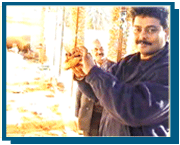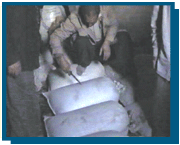There are about 75 different spices grown all over the world, of which a large number have made their home in India. The most common use of spices is as appetizers. They lend flavor, aroma and taste to our food. People in India have been using them for another important purpose too - as medicines. There was a time when every housewife commonly treated minor ailments such as cold and cough, burns bruises and stomach upsets. Unfortunately, with the spread of modern medicine, we have forgotten much of this valuable heritage.
Asafoetida

One of the important spices out of them is Asafoetida commonly know in India as Hing. It is a mixture of Persian and Latin word the Persian word Aza, which means resin and Latin word fetida which means stinking. Asafoetida or Hing is not only a condiment to spice our food with but it is also a medicine in its own rights, since it heats up blood and enhances the blood circulation it is credited to cure many ailments. Asafoetida heats up blood and keeps it clean as well, and when our blood remains warm, the decay due to age would be miles from us. It is anti-septic and germicidal.

Basically Hing (Asafoetida) is collected in three forms Tear, Mass and Paste. In Iran hing is collected in Tear and Mass form and in Afghanistan it is been collected basically in Paste and Mass form only. This is basically because of difference in ways of collecting hing. In Iran during spring time when the plant is about to blossomed the stem and roots are cutted or teared up to 4cms long round slices around 25mm in diameter, and milky gummy resin exudes from the cutted surface and is scarped off, it is sliced successively for the period of around 3 months and exudes collected in Mass form and its sliced Pieces collected separately in tear form. both known as Shir (Mass) and X.L. (Tear). In Afghanistan the root of this plant is scratched a little just below the stem and a cut is made, from this cut emerges a thick juice like paste Which is collected. Depending upon its areas there are few places where its paste is very thick hence collected in Mass form also which we commonly call as Khawal, Charas or red hings, to mention one more thing here the odour of Asafetida is stronger and more tenacious than that of the onion, the taste is bitter and acrid; the odour of the hing resin depends on contents of the volatile oil.
.png)


